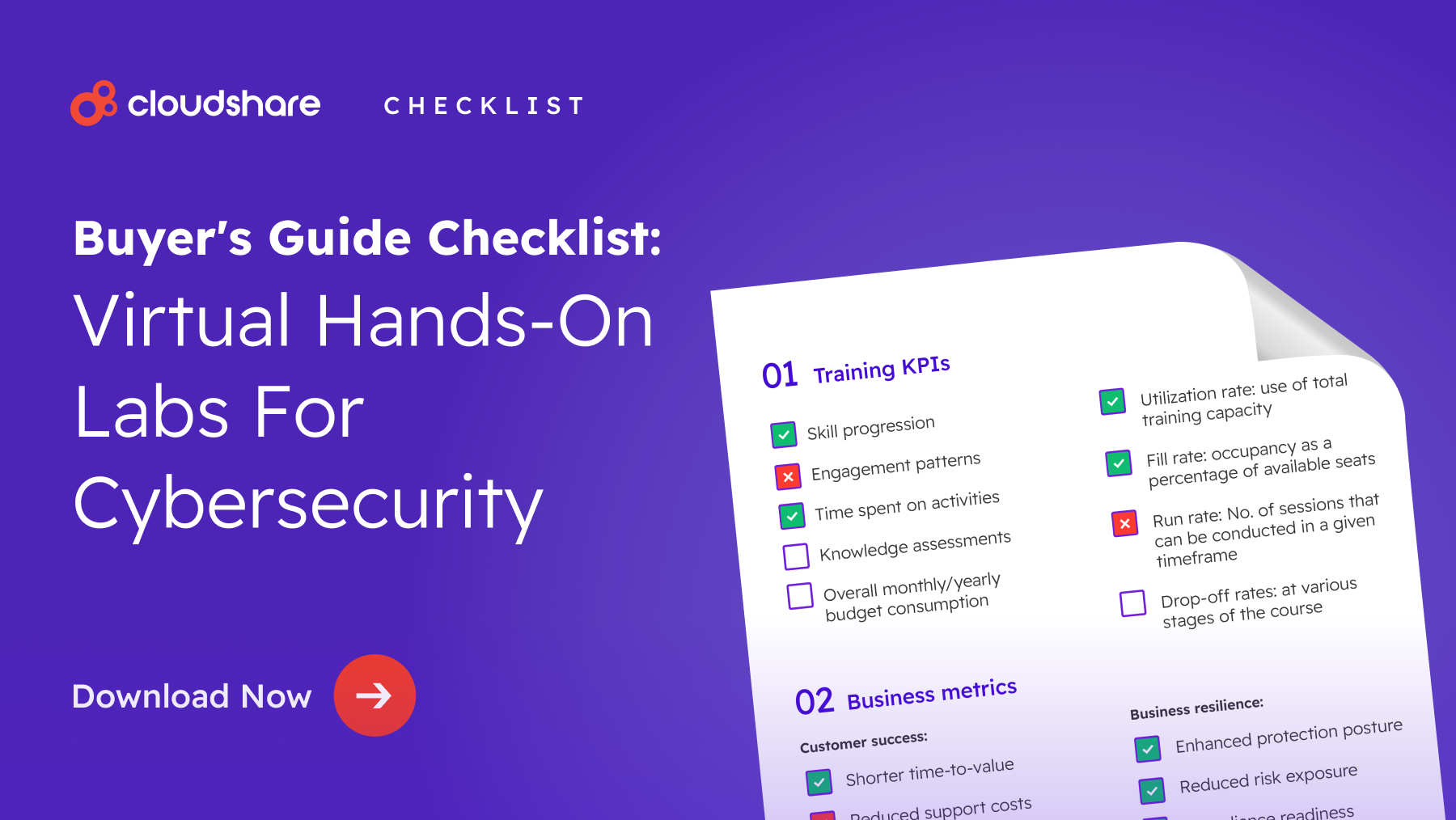
There are many factors that determine the success of a virtual training initiative. You need a good training strategy with clear objectives and milestones. You need solid educational materials and an effective means of delivering them to trainees.
And above all, you need the right virtual training platform. In a modern context, this will generally take the form of a virtual training lab. These cloud-based training environments provide learners with an interactive, intuitive, and accessible experience that’s also highly scalable and cost-effective.
Bear in mind, however, that not all virtual labs are created equal. And not all of them will provide the necessary functionality for your training program. While your specific needs and requirements may vary, the solution you select should, at minimum, provide the following essential features.
Reporting and Analytics
Self-paced and virtual instructor-led training share one common characteristic. At their core, both are data-driven and without insights into how learners interact with course materials, neither training modality can succeed. With that in mind, choose a virtual training lab with analytics functionality that allows you to measure and monitor the following:
- Attendance rate.
- Average time to completion.
- Course completion rate.
- Learner engagement and satisfaction.
- Return on investment.
- Knowledge retention.
- Learner behavior.
Essentially, you want to know everything about how your learners interact with training content down to how they interact with each component. Look also for a platform that can generate easy-to-understand visual reports so you can more readily share insights.
Integrated Communication
Communication and collaboration are hallmarks of effective learning. Look for a training platform that either includes built-in chat and videoconferencing or one that integrates readily with some of the most common workplace communication tools. An over-the-shoulder view for instructors is also a key feature, as this will allow learners to receive direct support as needed.
Skill Verification
Particularly for certification programs and employee onboarding, skill verification is essential. You need to know whether your trainees have actually absorbed what they’ve been taught or if they simply went through the motions without retaining anything. If your training is primarily self-paced or operates on a larger scale, look for a platform that can automate the verification process.
Cross-Platform Compatibility
Unless you are certain that participants will exclusively access your training on a single type of device, look for a training lab that offers a seamless cross-platform experience. Learners should have access to the same training environment no matter what system they use. Avoid training solutions that are only available on certain device types — iOS instead of Android, for instance.
White-Label Branding
If you intend to use your training platform for customer education, find a vendor that allows you to apply custom branding to their solution. After all, your training is, in this case, a direct extension of your brand. With that said, white labeling isn’t quite as important for a training solution that’s strictly for internal use but rather something nice to have, as it can help instill a sense of professionalism.
Instructor Engagement and Enablement
Your virtual training platform should be just as easy for instructors to use as it is for learners. Instructors should be able to quickly spin up custom training instances without requiring IT intervention. You may also want to find a solution that provides access to easy course creation and management or one that integrates easily with an existing learning management system or browser.
Artificial intelligence is also a huge selling point where virtual training technology is concerned. In addition to helping with content creation, AI integration can offer guidance on how to improve training materials and support personalized learning paths for participants.
Intuitive Self-Service Support
One major goal of customer education is to reduce the workload of your support team. A virtual training solution that creates more work for that team is counterintuitive, especially if that workload comes from employees who can’t quite figure out how the platform works.
In addition to being easy to use, a good virtual lab should offer a range of self-service options to help users both troubleshoot issues and leverage the platform to its fullest potential.
Cost-Effective Scalability
The potential to scale is one of the most significant benefits of virtual training. You need a virtual training platform that lets you take full advantage of that. Look for a vendor that offers a transparent pricing model with the flexibility to use as many or as few resources as necessary.
Find the Right Platform for Your Training Needs
There’s a lot that you need to consider when looking for a virtual training solution. You need to think about your training objectives and your use case. You need to consider your budget, industry, and requirements.
Above all, you must ensure you find a solution with the critical functionality required by every virtual training initiative. That’s where we come in. Book a demo, and we’ll show you what CloudShare can do.
In the meantime, if you’re interested in learning more about virtual training, we recommend checking out 9 Virtual Training Trends That Are Reshaping the Industry and then reading about the main components of a virtual training environment.





